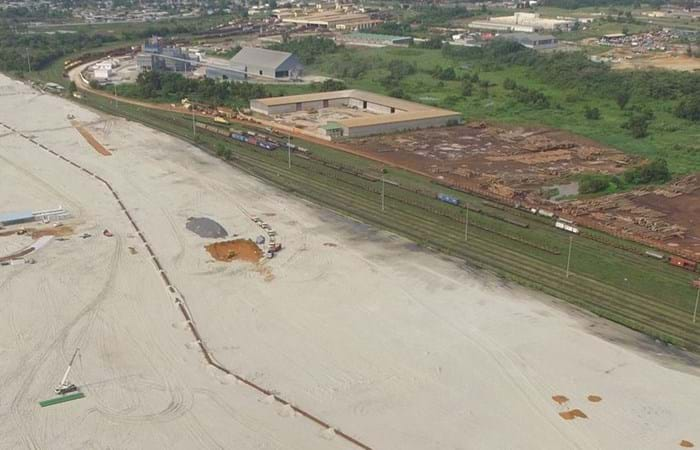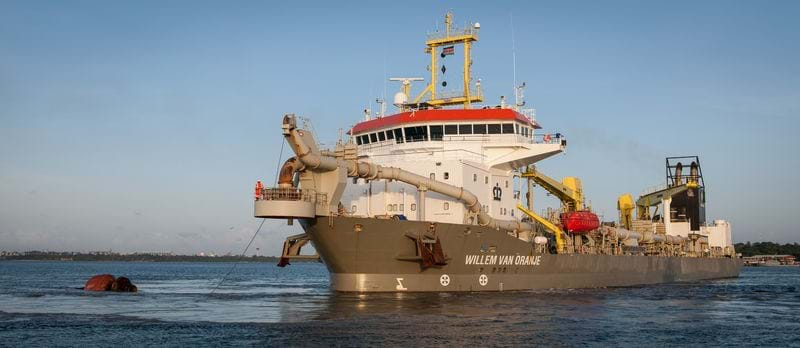A new area was constructed in the Port of Libreville for a mineral terminal, dry dock, fishing port, processing facilities and other port activities, such as aggregate processing. This new port development was required to improve and strengthen the logistic capacity for the inland mining industry, to reduce export costs, and thus to increase the competitiveness of mineral exports from Gabon.
Boskalis International Gabon (SA) was the contractor for dredging the access channel and the vessel turning basin, and for the reclamation of the new port development area.
Scope
The project scope encompassed:
- Dredging and relocating approximately 1.3 million m3 of unsuitable material from the new vessel turning basin, using the Trailing Suction Hopper Dredger (TSHD) Waterway. The dredged material was transported to a designated offshore disposal site, located at a sailing distance of approximately 4 km.
- Dredging and pumping ashore approximately 2.0 million m3 of sand from an offshore borrow area at approximatively 30 km distance to construct a platform for stockpiles, and infrastructure for the mineral terminal and other facilities, using the TSHD Willem van Oranje.


